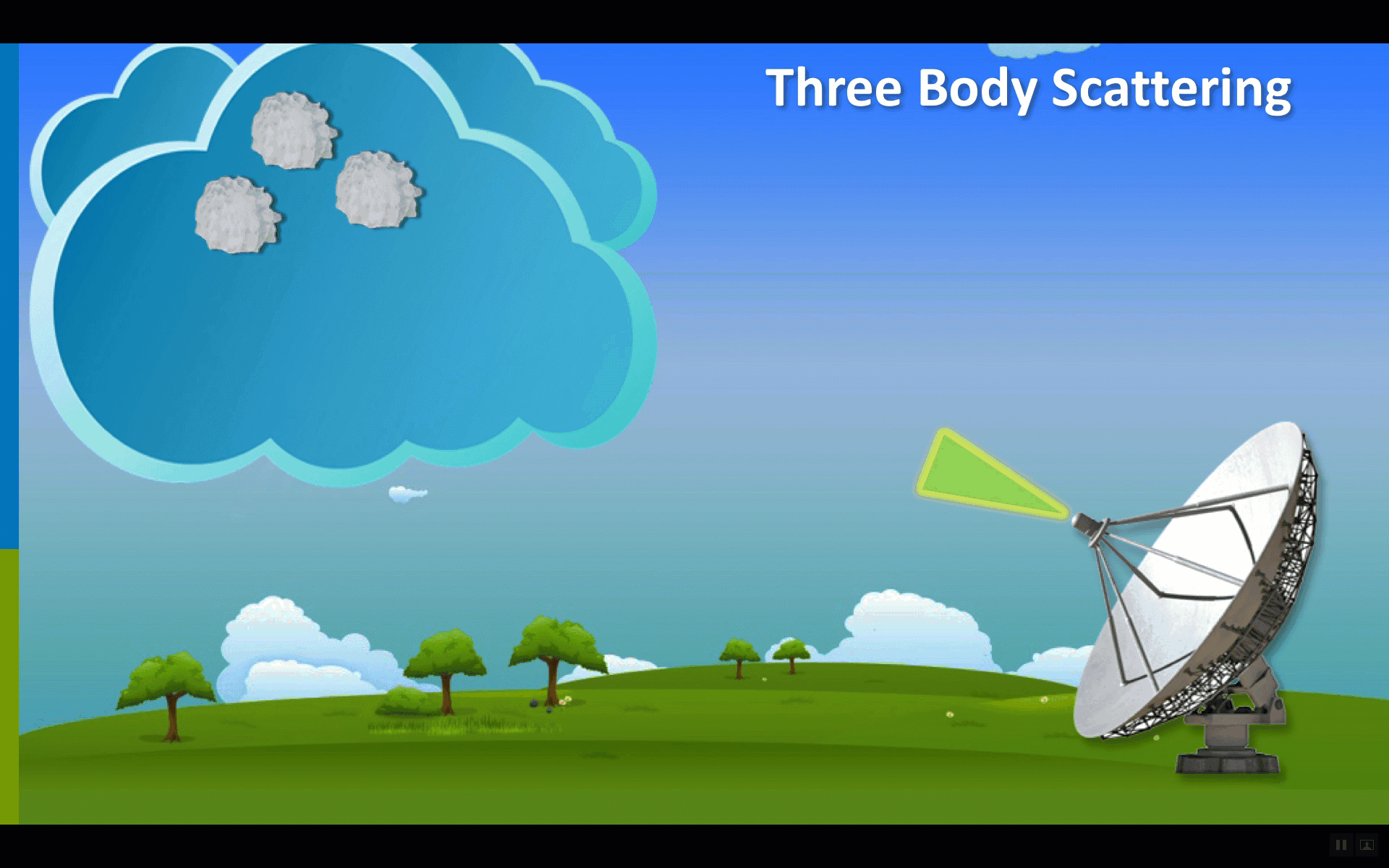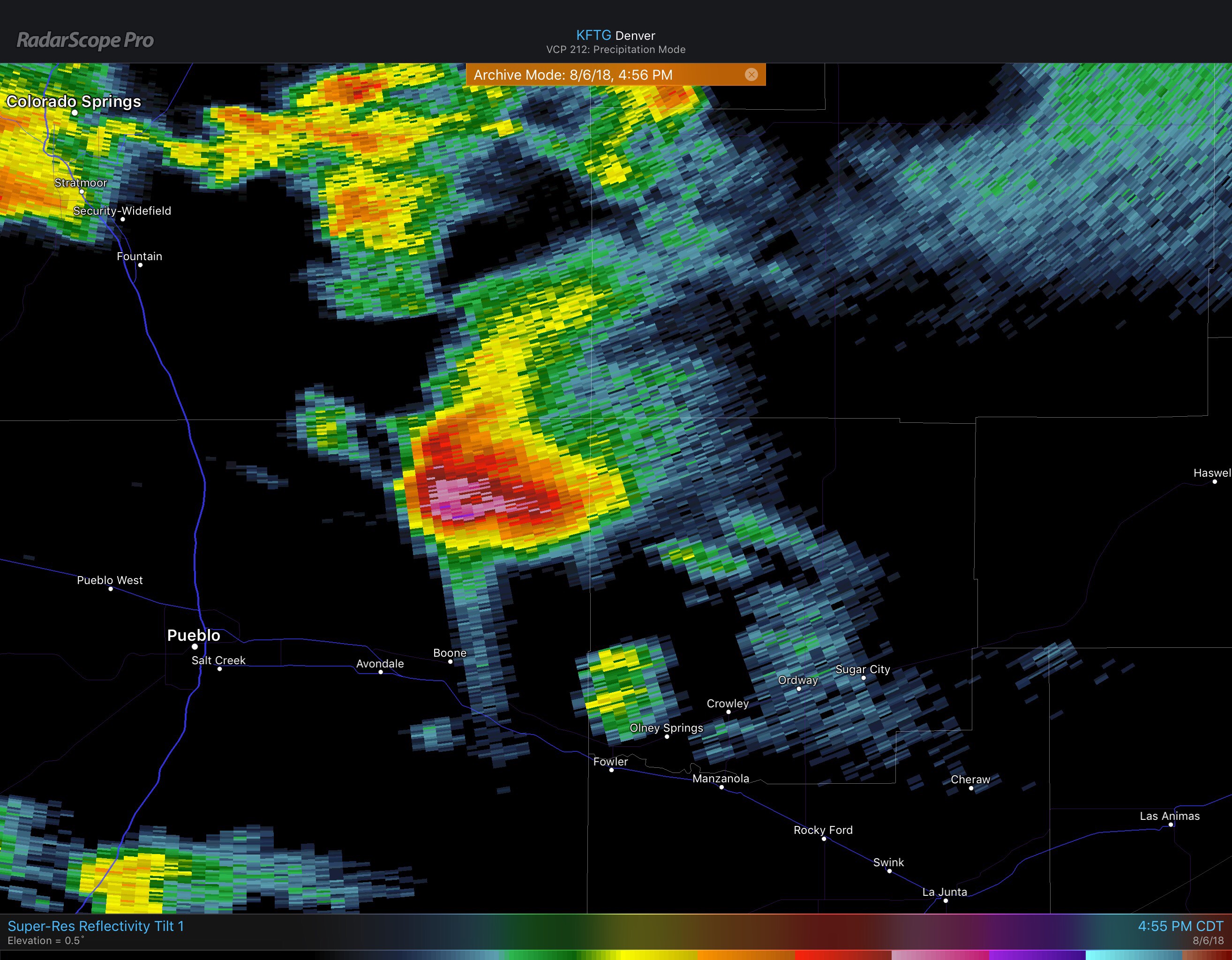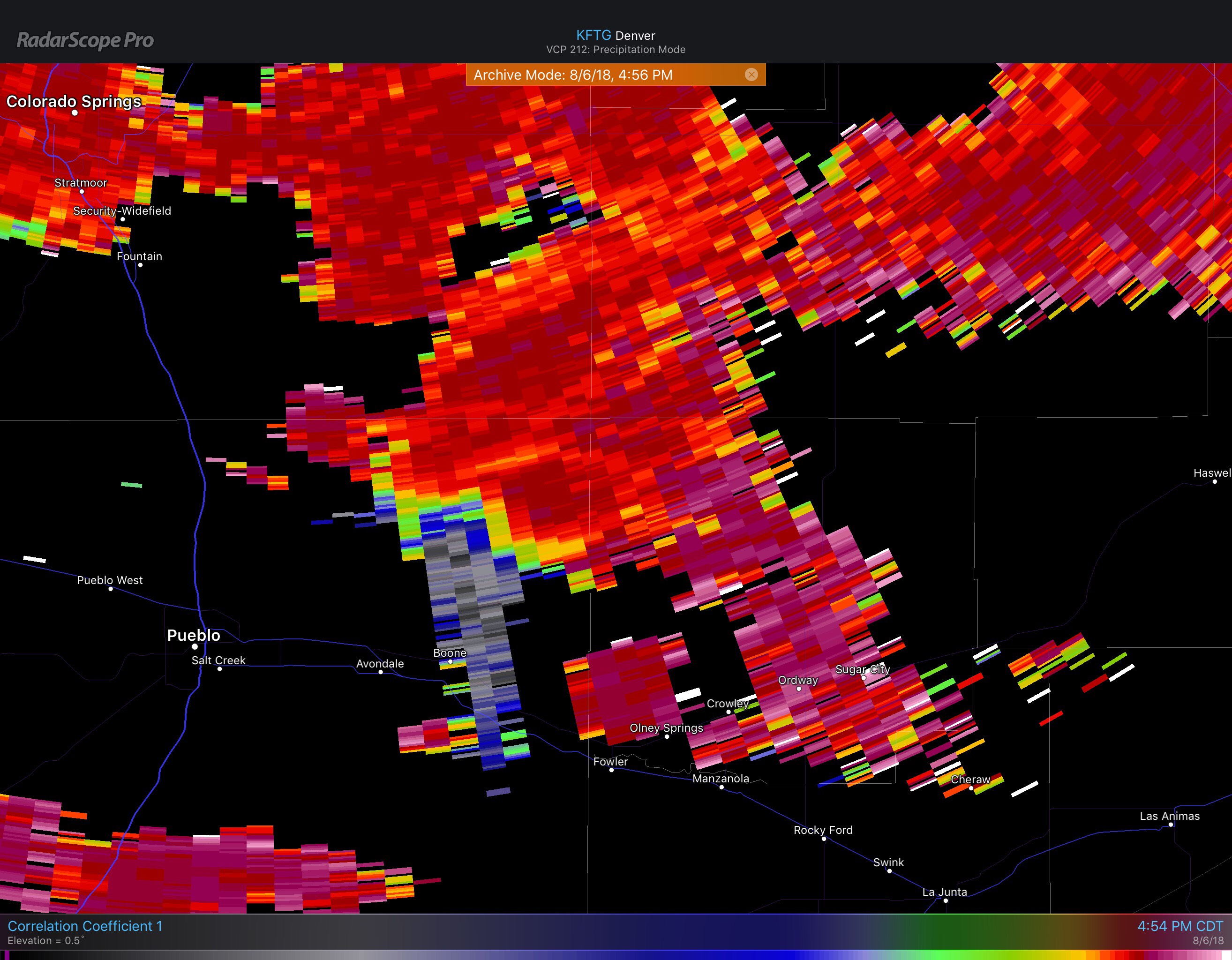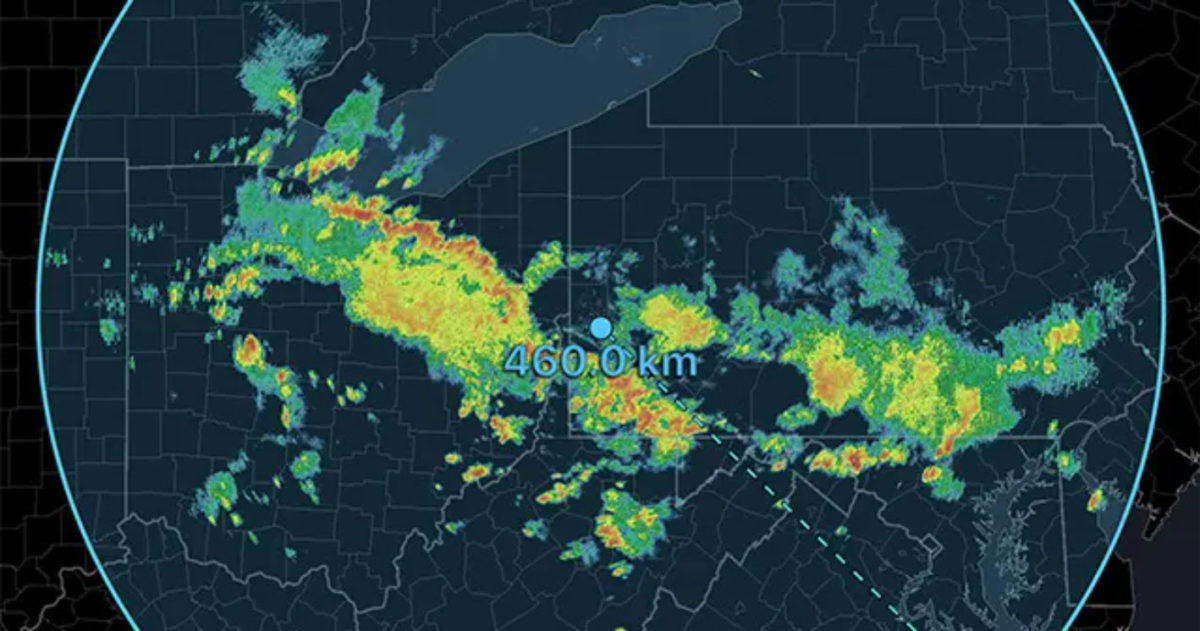When large hail develops in a thunderstorm, some of the radar beam’s energy observing the hailstone is reflected downward toward the ground, as well as back to the radar. This motion can create an echo known as a Three-Body Scatter Spike (TBSS) or a hail spike.

Reflectivity values in a hail core are typically above 62 dBZ when a spike is observed; in the spike itself, reflectivity values are usually less than 20 dBZ. Here you can see an example of a TBSS near Pueblo, Colorado on August 6, 2018, on RadarScope. The signature is visible as the lighter reflectivity values pointing to the south of the strongest area of the storm.

Three Body Scatter Spike near Pueblo, Colorado
When looking at echoes that are less commonly observed, one product that is especially useful is the Correlation Coefficient. (CC) This product provides a quick way to determine whether an echo seen by the radar is meteorological (>0.8) or non-meteorological (<0.8). Take a look at the CC data for the storm shown above, and you will notice that values within the spike are significantly less than 0.8, indicating that it is a non-meteorological feature.

Three Body Scatter Spike Correlation Coefficient
While these spikes are relatively rare, they can alert you to storms that are producing damaging hail. Correlation Coefficient can be used to confirm that the feature being observed using reflectivity is genuinely a TBSS. However, the presence of a spike does not necessarily indicate that large hail will reach the ground. Storms in the Southeast can have a TBSS without hail being observed at the surface due to higher freezing levels and increased relative humidity. These factors increase the possibility that hailstones will melt before reaching the ground.








